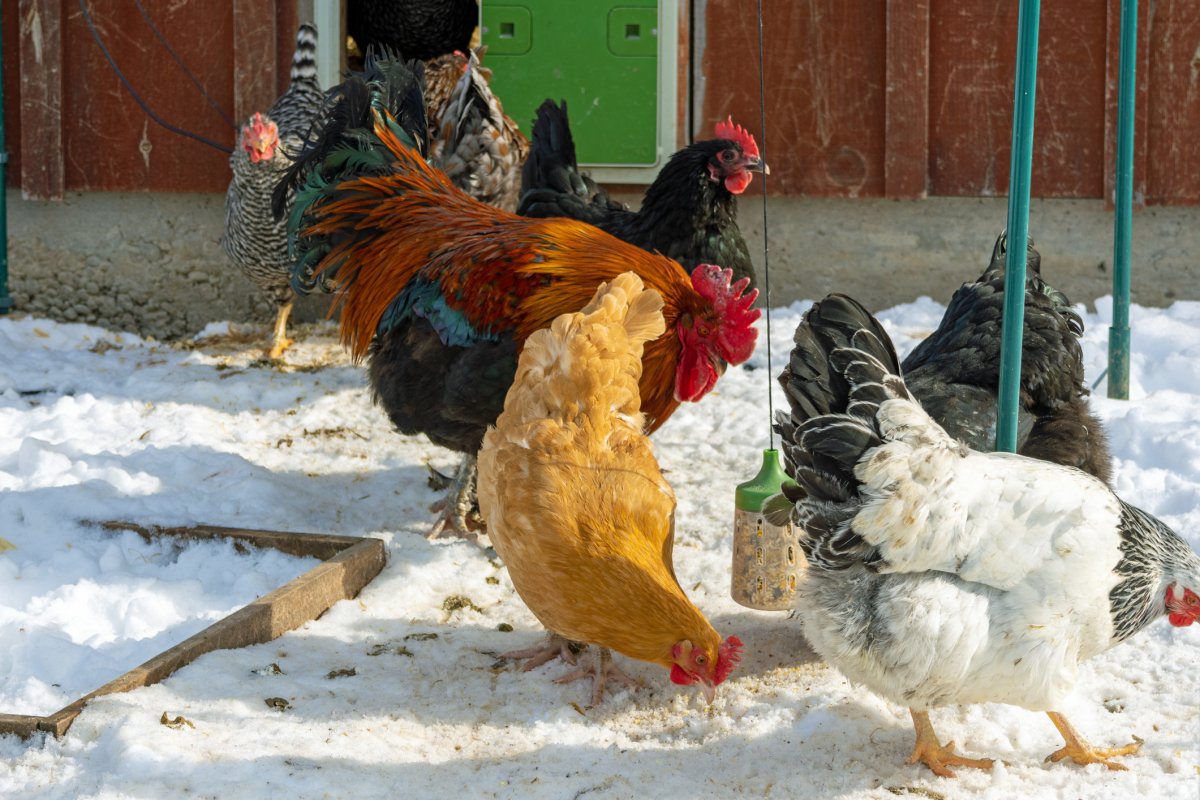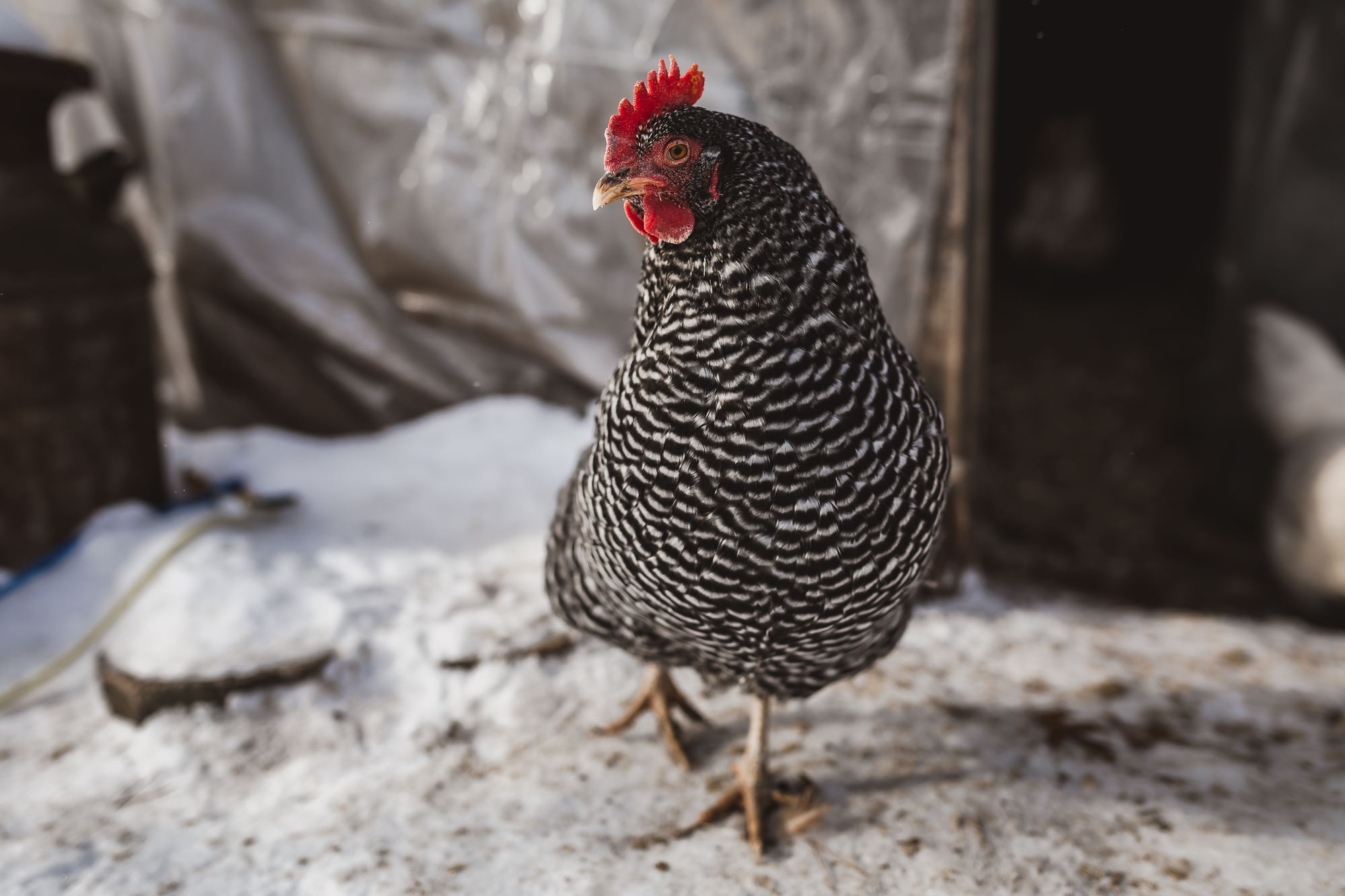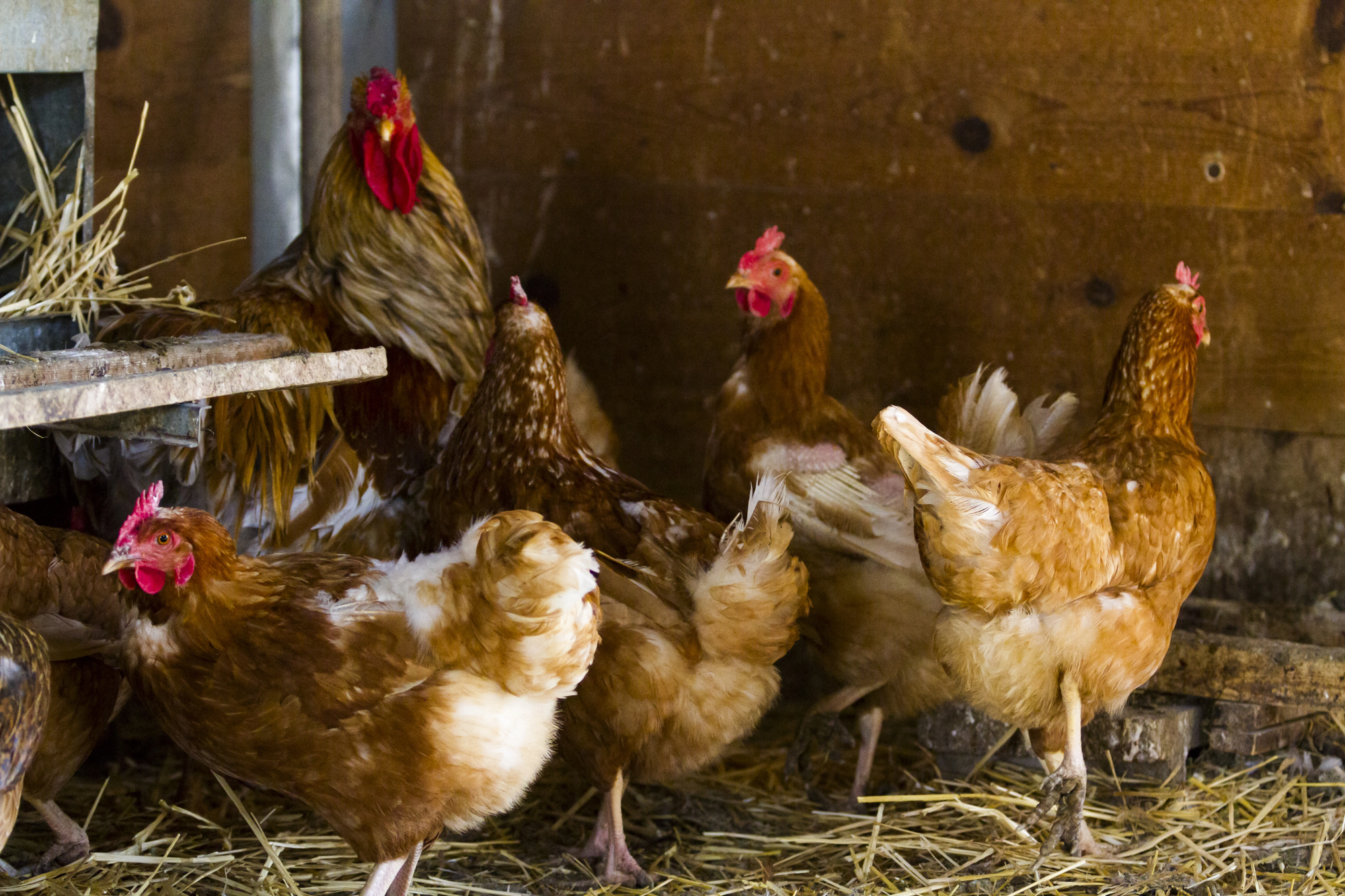

We may earn revenue from the products available on this page and participate in affiliate programs. Learn More ›
If you’re new to raising a backyard flock or getting ready for an unseasonably cold winter, knowing how to keep chickens warm in winter is a must. Keeping your cherished chooks comfy and cozy on cold days and nights starts with the chicken coop. It should be the right size for your flock to make best use of their body heat and feature wide roosts with plentiful, deep litter. The chicken coop should also be positioned where it will capture the greatest amount of sunlight possible on your property.
Most importantly, your chicken coop should be insulated, something backed up by University of Minnesota Extension guidance on the subject. Make sure the coop is still ventilated in order to avoid excess moisture buildup, but don’t create drafts.
Tools & Materials
Bobvila.com may earn a commission from purchases made through these links.
Project Overview
Working Time: A few hours
Total Time: 2 days
Skill Level: Intermediate
Estimated Cost: $50 to $200, depending on coop size
Before You Begin

Although the purpose of insulating a chicken coop is to retain heat, it’s important to add ventilation at the top of the coop to encourage air circulation, stop ammonia buildup, reduce humidity, and prevent mold. High levels of moisture combined with cold temperatures can lead to frostbite in chickens.
Step 1: Seal any gaps, cracks, and holes in the coop.
“Before starting, survey the coop for any construction vulnerabilities like gaps or loose boards,” urges Lamprey Construction owner Jason Lamprey. “Check for any existing leaks or drafts in the coop,” agrees Jason Hedtler, owner of Hedtler Roofing LLC.
Sealing all existing gaps in the chicken coop before insulating ensures efficiency. Seal gaps, cracks, and holes with poultry-safe caulk, waterproof sealant, wood glue, or weatherstripping to prevent moisture, cold air, and predators from gaining access. Be sure to also check the floor for gaps and holes where predators or rodents may have tried to get in.
Step 2: Measure and cut the insulation panels.
Now, it’s time to install rigid foam board insulation panels throughout the coop. “Start by measuring and cutting the foam boards to fit between the studs,” Hedtler explains, with Lamprey adding, “Cut the insulation to size and fit it snugly between the walls.” (Styrofoam sheets can be used under plywood.)
First, measure the height and width of the area between the studs. Then, mark the measurements on the foam board. Use a box cutter or utility knife to dash the insulation board—foam board can be scored and snapped along the cut line. Just remember the age-old adage: Measure twice, cut once.
Step 3: Secure and cover the insulation panels.
Before starting, make sure the wall surface is clean. Use a staple gun, mounting screws, or adhesives to secure the insulation panels to the walls. Seal any remaining gaps with poultry-safe caulk or spray foam insulation, and for particularly cold or damp walls, consider adding a vapor barrier.
Lamprey suggests adding a protective layer of wire mesh to prevent chickens from pecking at the panels and to keep rodents out. Richard Garrett, owner of RG Pro Builders, recommends alternatively “securing them with plywood to keep chickens from pecking at them.”
Step 4: Block floor drafts with insulation or deep bedding.
For coops built with wooden floors, check them for gaps, cracks, and holes, as well. Seal them using the same methods and products used to seal the walls, and you may want to lay an extra layer of plywood or other poultry-safe insulation to the floor.
“For additional warmth, consider adding a layer of straw or hay, which is a natural insulator,” Hedtler advises. And using straw or wood shavings on the coop floor adds a natural insulation layer, adds Garrett. Chicken manure is 70 percent water, so it’s important to use absorbent materials that can soak up moisture and prevent frostbite. Just avoid using materials that chickens might peck at or ingest.
Final Thoughts

When temperatures plummet below 35 degrees Fahrenheit, chickens need some help staying warm. A properly insulated coop free from drafts, with deep bedding and appropriately placed vents, can help retain heat and release moisture. All of this will provide a cozy, healthy environment for your chickens during the winter.
Other ways to keep chickens warm in the winter months include ensuring the flock has access to clean (warm, if possible) water, supplemental high-quality food, and wide roosting bars (2×4 boards work best). Finally, don’t forget to add bedding to the nesting boxes for extra warmth and comfort.
